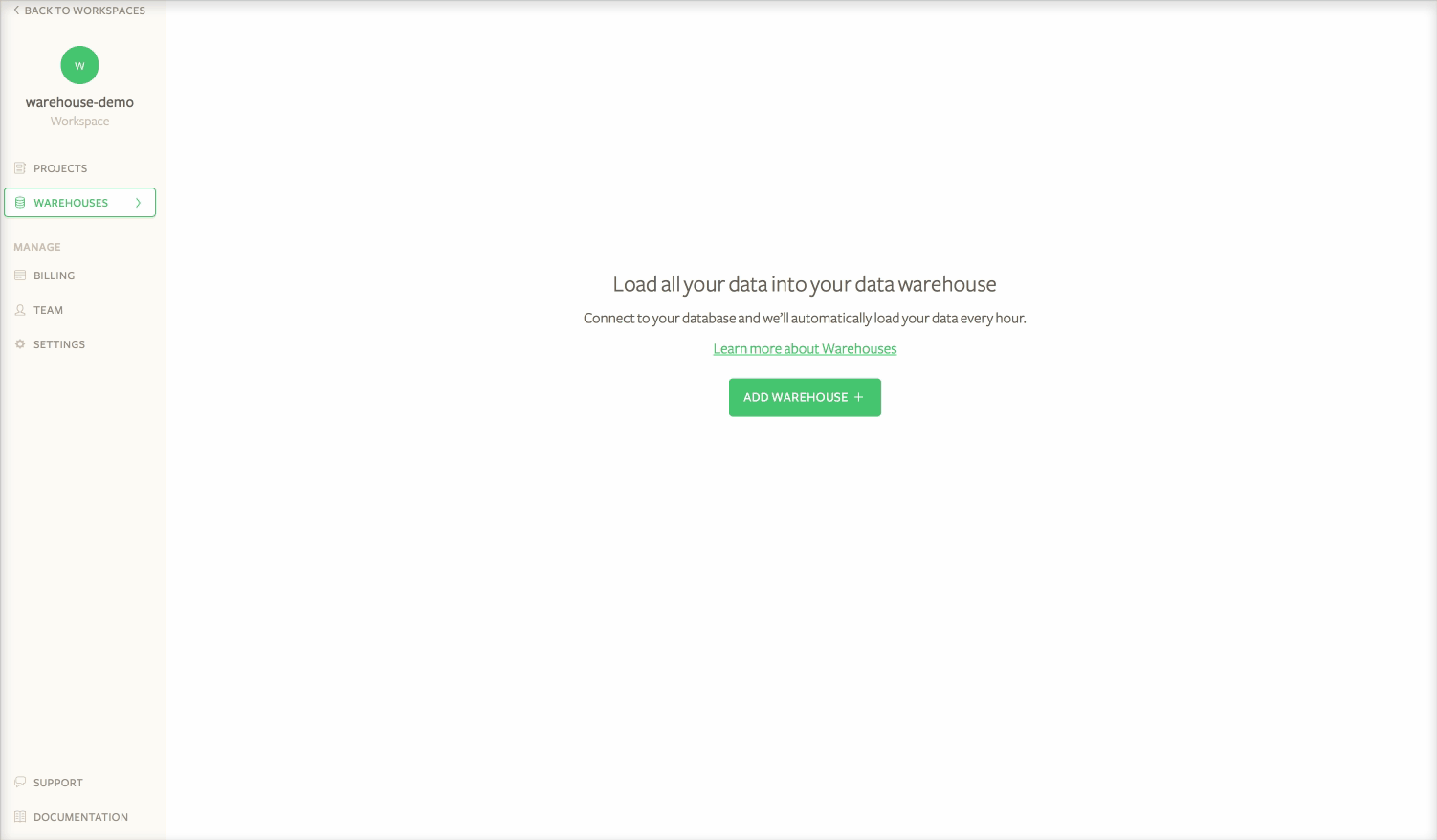Introducing Warehouses: Web and Mobile Data to SQL in Minutes
It’s no secret that understanding your customers better will drive better product decisions. But getting the raw data on how customers interact with your web and mobile products has been a huge pain — leaving only the rich or the resource-rolling to be able to access their data in SQL. The rest of us have to deal with the constraints of out-of-the-box reporting tools.
We believe more companies should be able to use SQL to power their analyses and answer questions unique to their business. That’s why we’re excited to announce Warehouses, a new product from Segment that lets companies of all sizes quickly get querying.
Warehouses will load your web, mobile, and server user data into your Amazon Redshift or Postgres database without writing a single line of ingestion code.

Just track your customer data with our simple API like you would for any analytics tool. Then query it in SQL.
We’ll do the heavy lifting of capturing, schematizing, and loading your data into your database of choice, so you can get to your insights faster. (We can also send your event data to 160+ tools for optimization and marketing with the flip of a switch.)
If you’re familiar with our managed SQL product, there are three important differences to note for today’s launch that make data warehousing more accessible to more companies:
You can write to your own, managed database.
You can connect to a Postgres instance.
You can pay less, with new accessible pricing.
We’re already writing 10,000 events a second to Redshift, and beta customers like Instacart have good things to say. (Read their story.)
“We’re using Segment Warehouses because having row-level data in SQL is critical for tracking QA and in-depth analysis. Now we can more easily diagnose and debug tracking issues which gives us greater confidence in the data,” our customer Fareed Mosavat, Sr. Product Manager at Instacart told us. “Plus, we can combine user data with other internal data, like quality of service and fulfillment, to get a more complete picture. We’re currently querying across these datasets to report on company-specific KPIs and analyze multi-touch attribution.”
From what we’ve seen, it takes a dedicated team of engineers at least six months to build their own data pipeline in house. Plus a ton of ongoing maintenance time. Instead, you can use our simple API methods for collecting customer interactions, and automatically load your data into your own database.
We’ll add a new table for each event and a new column for each property. You don’t need to worry about defining the schema down to column sizes and data types, or figuring out how to scale the system — we’ll handle that for you. Plus, we’ve optimized the schema for running analysis, so you can get querying quickly.
Different databases are good for different use cases. We want to make sure you can pick the one that’s best for your situation.
We’d suggest Postgres if you’re under 1TB of data and have limited engineering resources. For that scale, Postgres is generally faster than AWS Redshift.
If you’re at a higher data volume, Amazon Redshift is the way to go. Redshift generally offers a better price-to-performance ratio for high volume analyses.
More and more companies want the flexibility of SQL to answer granular questions about their customers. To meet the demand, we’re lowering the barrier to access raw data in SQL with open pricing and Warehouses available on every tier.
You don’t even need to talk to us to get started (though we’re always here to help)! Just sign up, enter your database credentials, track your data, and done! Data is streaming.
To get your data into Redshift or Postgres today, signup, login, or read the docs!
If you’re interested in the Segment-managed option, let us know!

Our annual look at how attitudes, preferences, and experiences with personalization have evolved over the past year.